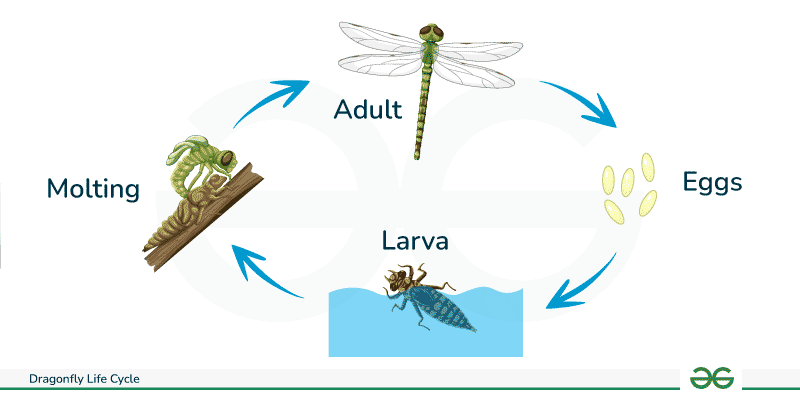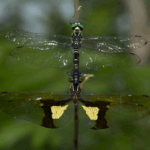Dragonfly Life Cycle
Dragonflies are insects. They have three stages in their life cycle: egg – larva – adult. Adult dragonflies have a long and slender abdomen, two pairs of wings and three pairs of legs. They also have very large eyes.
Dragonflies are insects. They have three stages in their life cycle: egg – larva – adult.
Adult dragonflies have a long and slender abdomen, two pairs of wings and three pairs of legs. They also have very large eyes.
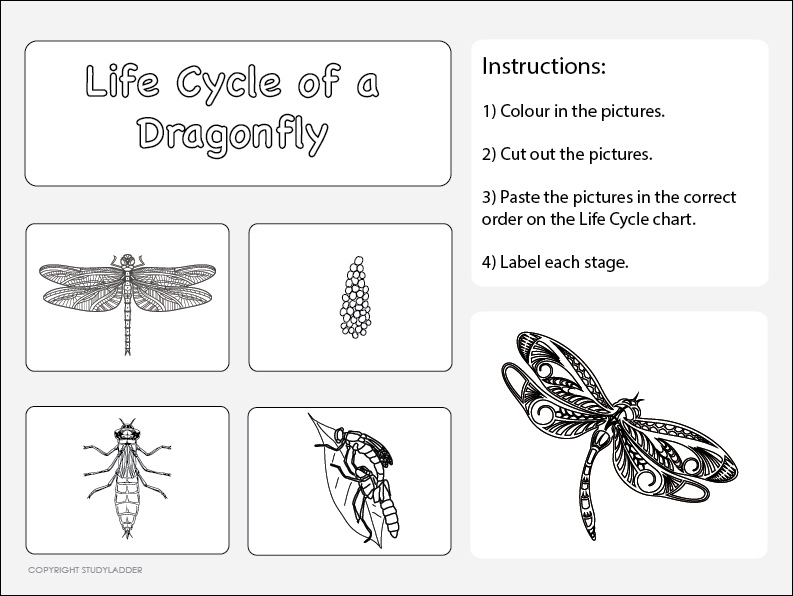
Let’s learn about the life cycle of dragonflies as they transform from eggs, to nymphs to awesomely beautiful flying machines! These fascinating insects have four distinct stages: egg, larval (or nymph), emergence, and adult. We will explore them briefly.
THE EGG STAGE
Female dragonflies, like hawkers and darners, lay endophytic eggs. This means that scythe-like ovipositors are used to inject these elongated eggs into plant stems, leaves, rotten wood, or debris that is at or near the surface of a water source. Sometimes the eggs are injected directly into stream or pond sediment.
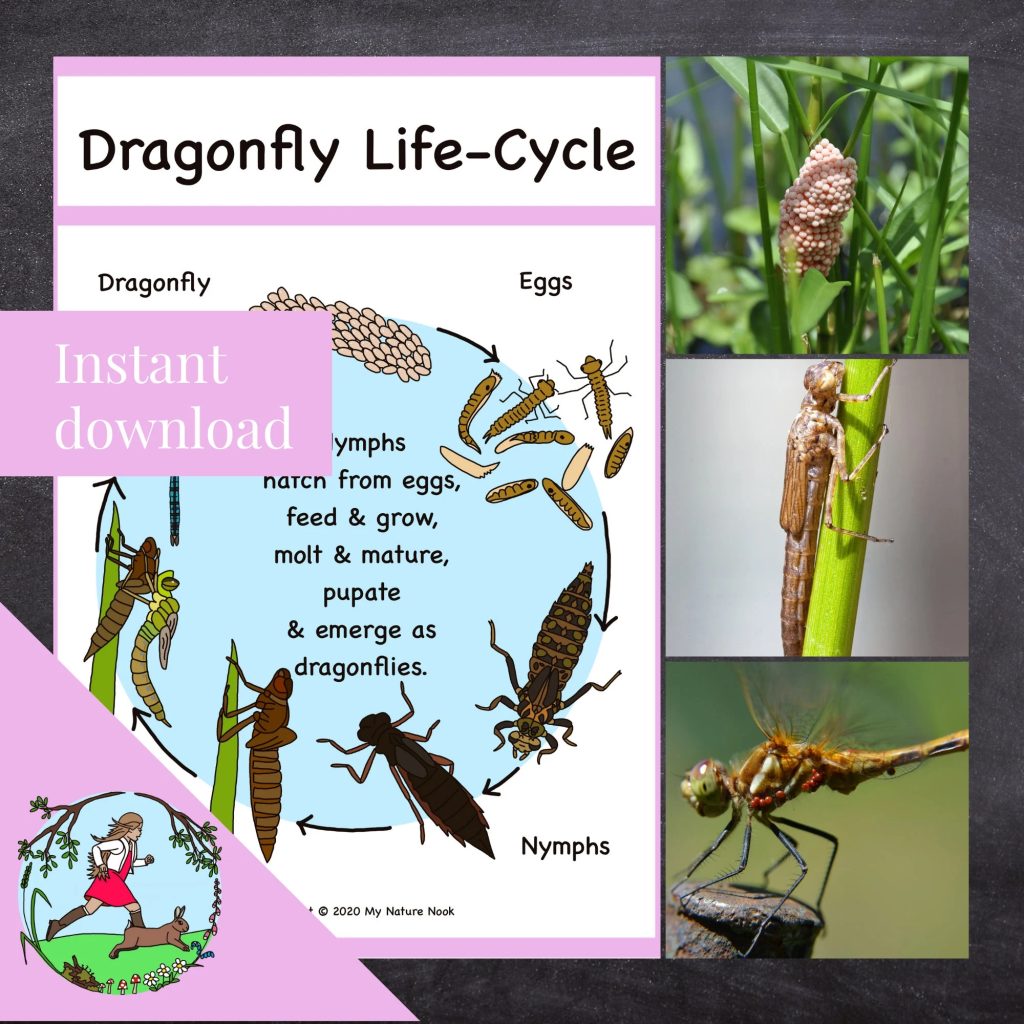
Other dragonflies, like emeralds, skimmers and clubtails, extrude round exophytic eggs from a special pore on the underside of their abdomens. There are two methods for depositing eggs: flying low over water and dropping their eggs as they go; or dipping the tips of their abdomens into water, releasing their eggs. The eggs sink to the bottom sediment or are deposited onto aquatic vegetation. Dragonflies that lay their eggs directly into water can produce thousands of eggs during their lifetime.
Once deposited, the time required for egg hatching is quite variable – from days to months or more.
THE LARVAL OR NYMPH STAGE
Most of a dragonfly’s life is spent in the larval stage. Typical larval development is one or two years, but it can range from a few months to over 5 years, depending, in part, upon ambient water temperatures. (Warmer temperatures generally equate to shorter larval development periods.)
Dragonfly nymphs have six legs, wing sheaths, and an extendable hinged jaw. During this aquatic stage, nymphs breathe through gills that are located inside their rectums. Dragonflies pull water into their rectum to breathe. The act of expelling water from their rectums allows them to propel forward to catch their desired prey. Like their adult counterparts, nymphs have a voracious appetite and are accomplished predators. They will eat insect larvae, crustaceans, worms, snails, leeches, tadpoles and even small fish.
In warm climates, the dragonfly larval stage may only take a few months but, in colder climates, this stage can last several years. During this stage, dragonfly larvae will molt between 9 and 17 times as they proceed toward their emergence as an adult.
DRAGONFLY EMERGENCE
The dragonfly’s final larval molt takes place out of water. For several days, the final-stage larvae live near the water margin. As they get ready for their final molt, they start breathing air. The larvae then climb up emergent vegetation where they redistribute their body fluids, as they push their thorax, head, legs and wings out of the larval skin. They rest for about 30 minutes allowing their legs to harden before the abdomen emerges from the larval skin (exoskeleton). This emergence process takes about three hours.
THE ADULT STAGE
After emergence, the young dragonfly must then wait hours (sometimes days) for their wings to harden before taking their first flight. The newly emerged dragonfly’s first flight is weak and rather short, only a few meters. It will also take days for the dragonfly’s full coloration to become evident. As their bodies and wings harden, they begin hunting for food. In about a week, they acquire their adult coloration and sexual maturity. The life expectancy of adult dragonflies is generally no more than one to two weeks, however, some dragonflies can live six to eight weeks. This is probably why dragonflies do not waste any time getting to the mating game!
With the ability to live as an aquatic larva under-water for almost 2 years, the insect dragonfly belongs to the insect order Odonata. Dragonflies from the order Odonata are physically large, robust, and stouter looking members belonging to the suborder called Anisoptera. Dragonflies falling under the sub-order of Anisoptera are also considered as ‘true dragonfly’.
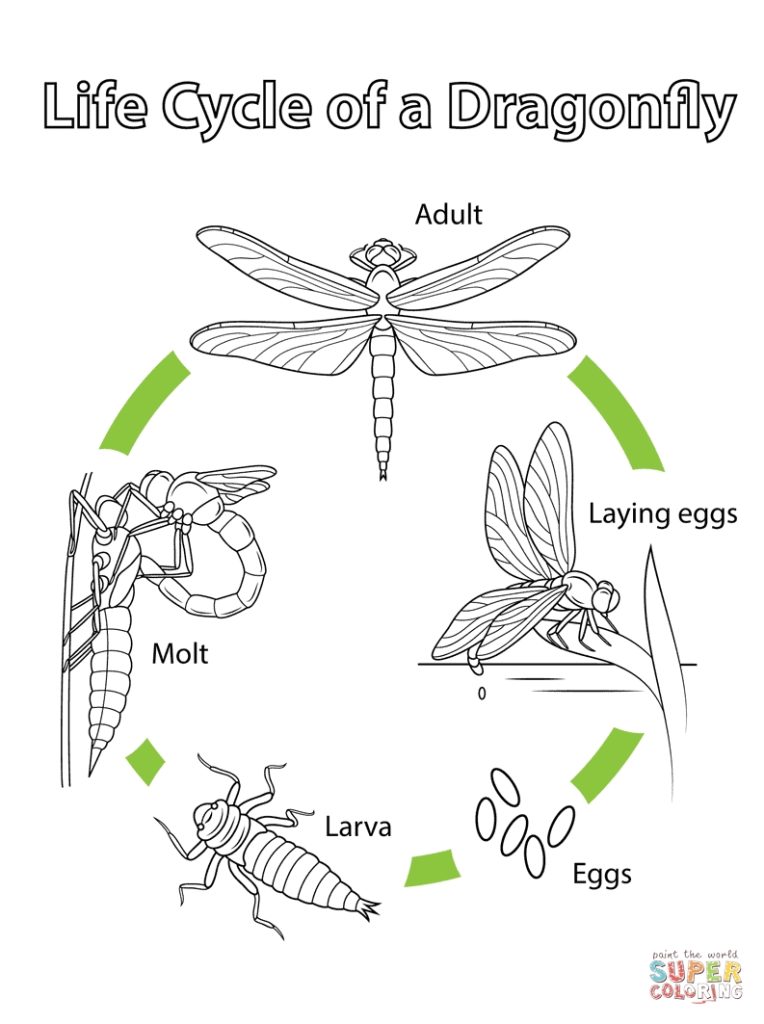
Life Cycle of Dragonfly:
Life cycle of a dragonfly is divided into three simple stages: the egg, the nymph and the adult. Initially, the dragonfly is out for hunting their respective mating partners. After mating the female dragonfly carries her eggs and gently places it on still water as running or moving water might wash away all the eggs to fish feeding areas.
Since complete metamorphism includes four stages of development – egg, larva, pupa and adult, the dragonfly falls under the incomplete metamorphism with three stages – egg, the nymph and the adult.
The Egg: A dragonfly begins their life in or near water in the form of eggs. After mating between the male and female dragonfly, the female dragonfly places her eggs at a stationary spot; in still water or pond. The eggs take one to five weeks to hatch.
The Larva: It is interesting to note that even though we’ve seen dragonflies mostly flying around us during hot summer months, they spend most of their life underwater as a larva. They can live underwater for as long as two years, and this is considered to be the longest stage in the life cycle of a dragonfly. After hatching, the larva has six tiny legs, hinged jaw and winged sheaths.
The Adult: When the larva reaches the final stages of larva, it shifts to the edge of the water and learns to breathe in air for the first time. Once the spot is found, the larva slowly pushes out of their new shell body from their old shell body to emerge as an adult dragonfly. The dragonfly looks pale and has reflective wings.
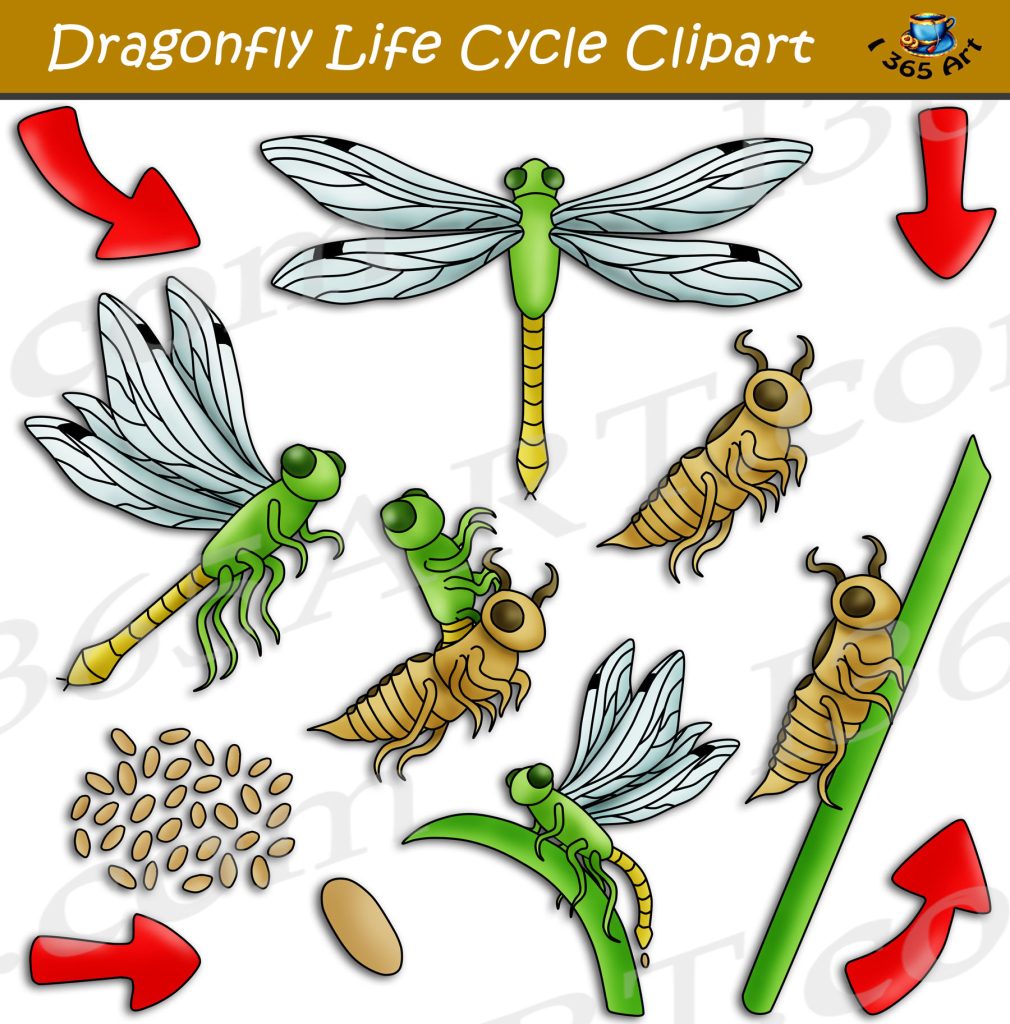
Dragonfly Metamorphism:
Unlike other insects that fly, dragonflies don’t have the pupa stage in their life cycle, and therefore have incomplete metamorphosis. Incomplete metamorphism occurs when there is an absence of the pupa stage. In complete metamorphism, there are all the stages – egg, the larva, the pupa and the adult. Dragonflies are also called Hemimetabolous as they do not have a Pupa stage in their life cycle.
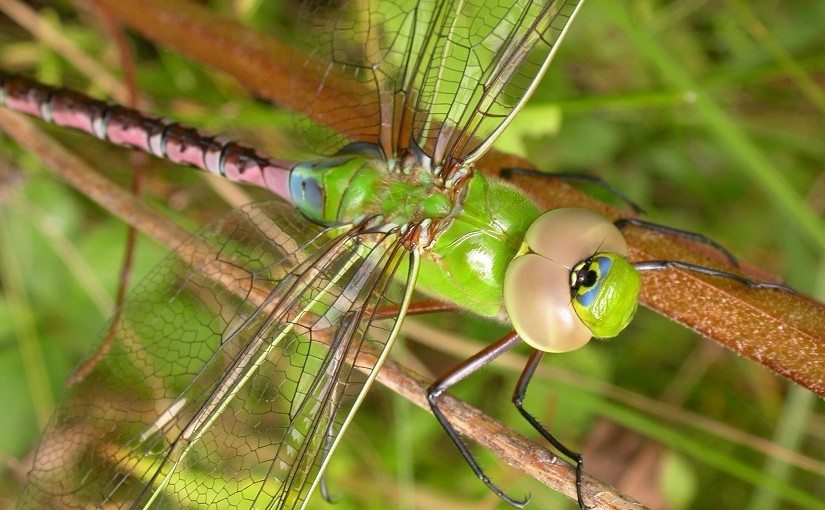
Once the dragonfly is mature, they travel back to the shore or nearest water body in order to procreate. The male dragonfly becomes territorial and obstructs other potential male dragonflies who enter their area and take control of female dragonflies. After this, the adult dragonfly mates and the entire process of breeding starts all over again.
Frequently Asked Questions on Dragonfly Life Cycle
Q1:What is the difference between dragonflies and damselflies?
While dragonfly falls under the order Anisoptera which means “unequal-winged”, the damselflies belong to the suborder Zygoptera which means “equal-winged”. There is a vivid physical distinction between the two kinds. Wings of damselflies are all uniform in shape and size but the wings of dragonflies are in different size and shape.
Q2:What is the life expectancy of a dragonfly?
While the larva (nymph) stage can last as long as two years, the adult dragonfly lives for 6 months.
Q3:Why do dragonflies dip their tails in water frequently?
When a dragonfly dips its tail in the water, it is laying eggs. Dragonflies place their eggs in ponds or any stationary water to protect the eggs from getting washed away in an otherwise flowing water.
Q4:What do dragonflies eat?
A dragonfly eats any insect or living organism that is smaller in size compared to the dragonfly. Few examples are midges, mosquitoes and butterflies in case the dragonfly is bigger than the butterfly. The larva dragonfly which lives underwater eats any species that are smaller in size. Certain species of dragonfly also eat spiders directly from the web.

